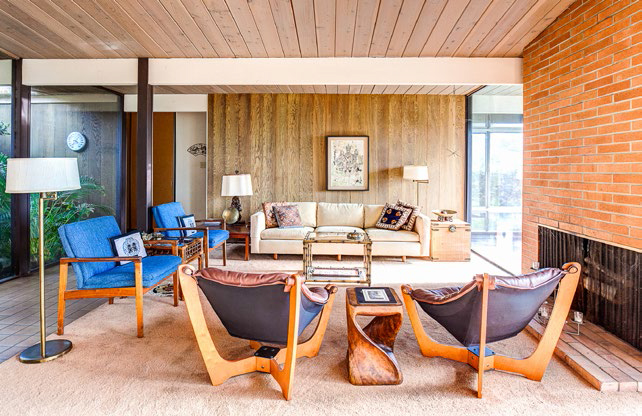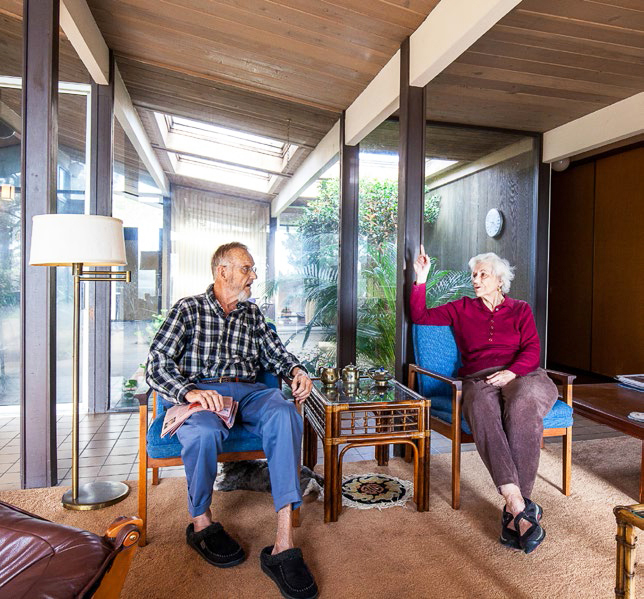Harmony in the Hills - Page 2
 |
 |
 |
|
|
|
|
|
|
It's notable that, while cities like Palo Alto are developing detailed 'Eichler guidelines' to preserve their homes (the draft guidelines run to 122 pages), in Sequoyah Hills the rules regarding architectural preservation cover only seven pages of a larger document, the neighborhood's 'Collected Rules.'
More surprisingly, the guidelines don't even mention 'Eichlers.' The guidelines apply both to the Eichlers and to the 350 or so non-Eichlers in the tract, ranch-style homes along with some Mediterranean and Monterey revivals.
How Sequoyah Hills preserves its look has its plusses and its minuses. The association's environmental committee, which handles architectural review, has succeeded in preserving the homes' overall character.
But because the focus is not Eichler specific, it's easier for changes in details that would be banned in such neighborhoods as Upper Lucas Valley—an inappropriate kind of door, for instance—to slip through.
From the start, Sequoyah Hills was a different sort of Eichler neighborhood, as it mixes a grouping of Eichlers at the main entry to the tract with non-Eichlers elsewhere. Some streets have Eichlers on one side facing non-Eichlers on the other. Three basic models include one with a Japanese-style dual-sloped roof.
In 1964 Eichler Homes and the Palo Alto homebuilder Brown & Kauffmann jointly bought about 100 acres that had housed a naval psychiatric hospital from the firm that subdivided the land.
It would be the first housing in this section of the southeastern Oakland Hills, not far from the zoo at Knowland Park and overlooking a golf course. There were to be 264 homes. Later builders added to the current number of homes.
Architect Claude Oakland arrayed the homes on the streets and designed many of the homes; others were by Jones & Emmons. The Eichlers were generally smaller than the Brown & Kauffmanns, some of which are two-story.
While the Eichlers occupy much of the area as you first enter the tract on Hansom Drive, there are two Brown & Kauffmann homes there too that served as model homes. Streets were named for horse-drawn carriages.
The neighborhood got off to a bit of an inauspicious start.
Alfreda Abbott, who grew up in a Victorian in West Oakland, her husband Bob, a pioneer in the field of computer security, and her sons Brian, 8, and Ross, 11, were among the first buyers.
One of Eichler's salesmen asked that checks for down payments be made out to him personally. "He ran off with the money," Abbott says. "It really put Eichler in a hole. My husband knew better. When he gave him the down payment, he made it out to Eichler."
Soon after the Abbotts moved in they woke to find a cross, about three feet high, burning in their front yard. "People don't think of something like that, with the Ku Klux Klan, up in this area," Abbott says.
"I don't think they really understood that much," she says of her sons, "but they understood it enough to know it was a really bad symbol."




